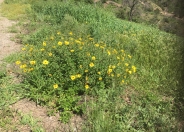
Common name: Coast Sunflower, Coast Encelia
Botanical name: Encelia californica
Encelia californica is a fast growing, woody shrub with bright green foliage and yellow daisy-type flowers that bloom from spring through summer. It can be used effectively in just about any landscape with regular or occasional pruning to maintain form. In inland situations, it requires more regular water during summer to look better. It grows to 3'-5' tall and wide. This plant attracts bees and butterflies in abundance. It does best in coastal areas from which it is native. It is a short lived plant but makes up for its shorter life with more color than most plants.
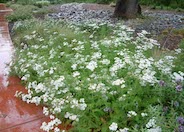
Common name: Common Yarrow
Botanical name: Achillea millefolium
Common Yarrow is a hardy perennial with hairy, evergreen green foliage. It has a tight cluster of white flowers and typically blooms in the summer months. It attracts bees and butterflies. It prefers full to part sun and becomes drought tolerant once it's established. Following bloom, one should dead head the plant and divide the clumps when it appears crowded to keep it looking tidy.
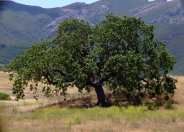
Common name: Coast Live Oak
Botanical name: Quercus agrifolia
The Coast Live Oak is an evergreen, round-headed tree with regal bearing. It can reach 25'-80' high and 25-40' wide and grows very well from the coastal areas to the interior valleys. Strong herculean branches adorn mature trees casting much appreciated summer shade. It attracts wildlife in droves.
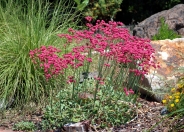
Common name: San Miguel Island Buckwheat
Botanical name: Eriogonum grande v. rubescens
San Miguel Island Buckwheat is a low growing shrub 1'-2' high and 3' wide. This attractive California native has a prostrate habit. It has showy, dark pink summer flowers held on stems above the foliage. Leaves are evergreen and spoon-shaped; leaves on upper surface are gray green and lower surface is woolly. It does well in coastal and inland valley areas, needing very little irrigation once it's established. It tolerates clay soil. It attracts butterflies.
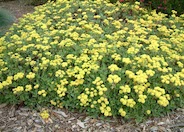
Common name: Sulfur Flower
Botanical name: Eriogonum umbellatum
This plant is a low, woody perennial growing 1'-2' high with a 3'-4' spread, having dark green/gray foliage. Attractive yellow flowers appear in summer. It is a CA native that is drought and cold tolerant. It attracts butterflies and beneficial insects. This plant does best in higher elevations and cold areas. It does well in full to part sun but needs very good drainage.

Common name: Howard McMinn Manzanita
Botanical name: Arctostaphylos densiflora 'Howard McMinn'
This shrub is highly appreciated for its decorative characteristics, which include a dense show of small, pale pink urn-shaped flowers in winter and spring. One of its main often overlooked attractions of this plant is the mahogany-red to brown bark (which peels beautifully) that can be revealed with some internal pruning once the plant is mature . It's small, red fruit resembles the tike apple, appearing at the end of winter just as Spring is coming on. Evergreen, shiny leaves are very neat and tidy. It can reach 8' tall and 10 wide. It can be pruned to desired size. This shrub attracts butterflies and hummingbirds. It does best in full sun in coastal areas and afternoon shade in warm, inland areas with well draining soil. Established plants need little or no water in coastal areas and occasional watering in warmer areas.
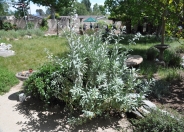
Common name: White Sage
Botanical name: Salvia apiana
This woody shrub has long stiff stems with gray green, wrinkled evergreen leaves when juvenile, changing to smooth and white with time. Fragrant white flowers bloom in the spring, attracting bees. Prune after bloom time to shape shrub. It provides a strong structural form as a garden focal point. It can reach 6' tall and wide; and is considered slow growing. Plant in full sun with well draining soil. Established plants need very little summer water. Leaves have been used for herbal teas and for medicinal purposes.